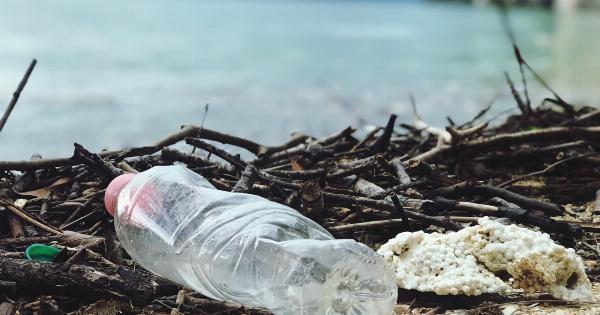Plastic is an integral part of our daily lives. From food packaging to household items, it has become a ubiquitous material in modern society. However, recent research has raised concerns about the potential risks associated with plastic exposure.
In this article, we will explore the various hazards associated with plastic and the importance of understanding and mitigating these risks.
The Scope of Plastic Pollution
Plastic pollution is a global environmental crisis with severe consequences for both human health and the ecosystem.
It is estimated that over 8 million metric tons of plastic waste enter the oceans each year, causing grave harm to marine life and contributing to the formation of massive garbage patches.
The scale of plastic pollution is not limited to the oceans alone. Landfills and incineration sites are overflowing with plastic waste, polluting soil, air, and water sources.
Microplastics, tiny plastic particles that measure less than five millimeters, have infiltrated even the most remote corners of the planet, including pristine environments like the Arctic.
Health Risks Associated with Plastic Exposure
Plastic exposure poses various risks to human health, primarily due to the presence of harmful chemicals.
Many plastics contain additives such as phthalates, bisphenol A (BPA), and flame retardants, which can leach into food, beverages, and the environment.
These chemicals have been linked to a range of adverse health effects. Phthalates, commonly found in PVC products, have been associated with reproductive disorders and hormonal imbalances.
BPA, used in plastic bottles and food containers, has been linked to developmental issues and increased risk of certain cancers.
Ingesting microplastics is another significant concern. Seafood lovers may unknowingly consume microplastics present in fish and other marine organisms, leading to potential health risks.
The long-term effects of microplastic consumption on human health are still being studied, but research suggests potential harm to the digestive system and immune function.
Environmental Consequences
In addition to the health risks, plastic pollution is wreaking havoc on the environment. Marine animals often mistake plastic debris for food, leading to internal injuries, starvation, and death.
Seabirds, turtles, and whales are particularly vulnerable to plastic pollution, with heartbreaking images of animals entangled in plastic litter circulating worldwide.
The widespread use of single-use plastics exacerbates the problem, as these items are typically discarded after minimal use. Plastics take hundreds of years to break down, resulting in a perpetual presence in landfills and the environment.
The production of plastic also contributes to greenhouse gas emissions and fossil fuel consumption, further exacerbating climate change.
Reducing Plastic Exposure
Given the significant risks associated with plastic exposure, it is crucial to take measures to reduce our reliance on plastic and minimize exposure to harmful chemicals. Here are some steps individuals can take:.
1. Opt for Reusable Alternatives
Choose reusable water bottles, shopping bags, and food containers made from glass, stainless steel, or other eco-friendly materials. By reducing the consumption of single-use plastics, you can significantly decrease your exposure to harmful chemicals.
2. Avoid Heating Plastic
Heating food or beverages in plastic containers can cause chemicals to leach into your food. Opt for microwave-safe glass or ceramic containers when heating meals.
3. Beware of Microplastics in Cosmetics
Microplastics are commonly found in personal care products like facial scrubs and toothpaste.
Check the ingredient list for terms like “polyethylene” or “polypropylene.” Choose natural alternatives or brands that have pledged to phase out microplastics in their products.
4. Support Legislation and Policy Changes
Support local and international initiatives that aim to reduce plastic pollution. Encourage lawmakers to implement plastic bans or restrictions, and advocate for stricter regulations on industries that produce or use plastic extensively.
5. Promote Recycling and Proper Disposal
Ensure you dispose of plastic waste properly by recycling whenever possible. Educate yourself on recycling guidelines in your area and encourage others to do the same.
Conclusion
Plastic exposure presents significant risks to both human health and the environment.
By understanding the hazards associated with plastic and taking proactive measures to reduce plastic consumption and exposure, we can contribute to a healthier and more sustainable future for ourselves and the planet.






























